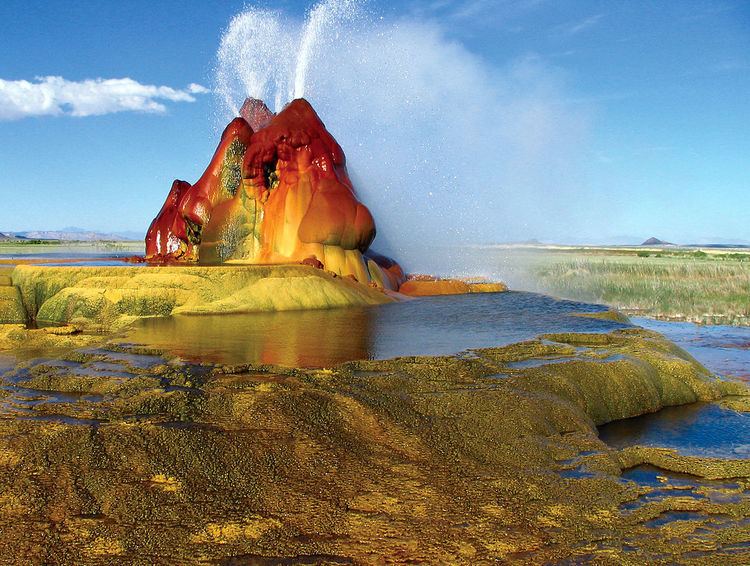Name origin Named after Fly Ranch Frequency Constant Elevation 1,223 m | Type Cone-type Geyser Duration Constant | |
 | ||
Eruption height 5 feet (1.5 m) and growing Similar Black Rock Desert, Grand Prismatic Spring, Lake Hillier, Spotted Lake, Lake Natron | ||
Amazing fly geyser exclusive interview
Fly Geyser, also known as Fly Ranch Geyser is a man-made small geothermal geyser located in Washoe County, Nevada approximately 20 miles (32 km) north of Gerlach. Fly Geyser is located near the edge of Fly Reservoir in the Hualapai Geothermal Flats and is approximately 5 feet (1.5 m) high, by 12 feet (3.7 m) wide, counting the mound on which it sits.
Contents
Location
Fly Geyser is located on the private Fly Ranch in Hualapai Flat, about 0.3 miles (0.48 km) from State Route 34.
History
The source of the Fly Geyser field's heat is attributed to a very deep pool of hot rock where tectonic rifting and faulting are common. Fly Geyser was accidentally created during well drilling in 1964 while exploring for sources of geothermal energy. The well may not have been capped correctly, or left unplugged, but either way, dissolved minerals started rising and accumulating, creating the travertine mound on which the geyser sits and continues growing. Water is constantly released, reaching 5 feet (1.5 m) in the air. The geyser contains several terraces discharging water into 30 to 40 pools over an area of 74 acres (30 ha). The geyser is made up of a series of different minerals, but its brilliant colors are due to thermophilic algae.
In June 2016, the Burning Man Project announced that they had purchased the Fly Ranch - which includes the geyser. The ranch (and geyser) are still closed to the public, but some access is planned for the future.
Other local geysers
A prior well-drilling attempt in 1917 resulted in the creation of a man-made geyser close to the currently active Fly Geyser; it created a pillar of calcium carbonate about 12 feet (3.7 m) tall, but ceased when the Fly Geyser began releasing water in 1964.
Two additional geysers in the area were created in a similar way and continue to grow. The first geyser is approximately 3 feet (0.91 m) and is shaped like a miniature volcano; the second is cone-shaped and is about 5 feet (1.5 m).
